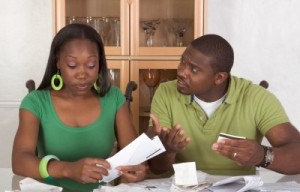 This is a complicated question, and each person’s circumstances are different. We HIGHLY recommend consulting with an attorney in order to properly determine which chapter of bankruptcy would best help you.
This is a complicated question, and each person’s circumstances are different. We HIGHLY recommend consulting with an attorney in order to properly determine which chapter of bankruptcy would best help you.
There are four main types of consumer (or personal) bankruptcy. Each of the types of bankruptcy is given a ‘chapter’ number. A short explanation of the four chapters is as follows:
Chapter 7 Bankruptcy:
This is a court-supervised sale of certain non-exempt property in order to pay your creditors. In a Chapter 7 filed in Alabama, you can generally exempt $5,000 of equity in your home, and $3,000 of personal property. Please be aware that there are other exemptions, and an attorney will be able to assist you in maximizing your exemptions. This type of bankruptcy is useful for eliminating unsecured debt (debt where there is no collateral or property tied to the debt, such as credit card and medical debt).
If you have a vehicle or house on which you are still making payments, you can usually keep the vehicle or house and still make payments, if you so wish. However, you would need to reach an agreement (called a reaffirmation agreement) with the creditor and have that agreement filed and approved by the court. As a general rule, you would need to be current on payments and properly insured in order for the creditor to agree to let you keep the property and still make payments.
This chapter of bankruptcy does not provide for any repayment of secured debts if you are behind on payments. It can temporarily stop a foreclosure or repossession. However, if the creditor will not enter into a reaffirmation agreement, the creditor may request that the court allow the creditor to repossess or foreclosure while you are in the bankruptcy. Also, the creditor may just wait until the bankruptcy is over in order to proceed with the repossession or foreclosure.
Chapter 13 Bankruptcy:
This type of bankruptcy is designed for people who have a regular income. It generally will allow you to keep assets that are not exempt (for example, if you have more than $5,000 of equity in your home, or more than $3,000 of personal property). This type of bankruptcy allows you to submit a plan to repay creditors over a three to five year period.
If you are facing foreclosure or repossession, a chapter 13 bankruptcy will allow you to stop the foreclosure or repossession, and repay any arrearage over the three to five year period.
A chapter 13 bankruptcy will also allow you to eliminate unsecured debt (debt where there is no collateral or property tied to the debt, such as credit card and medical debt) or pay back only a portion of that unsecured debt if you have property that is not exempt. This usually results in you paying only a small portion of what you owe, and discharging the rest.
Chapter 11 Bankruptcy:
This type of bankruptcy is primarily used by businesses when they file bankruptcy. This type of bankruptcy is available to consumers, but is generally only used when there is a business involved.
Chapter 12 Bankruptcy:
This type of bankruptcy is available to family farmers and fishermen with regular income, and allows for you to repay debts over a three to five year period of time and allows you to continue to operate the business while the bankruptcy plan is being carried out. This type of bankruptcy is very similar to a Chapter 13 bankruptcy, but has special provisions for operating a farm.
